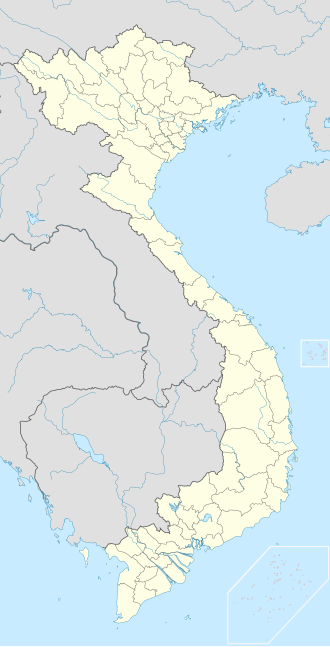Top Qs
Timeline
Chat
Perspective
Mũi Né
Ward in Vietnam From Wikipedia, the free encyclopedia
Remove ads
Mũi Né is a coastal fishing ward in the Lâm Đồng Province of Vietnam. The ward has approximately 25,000 residents. Mui Ne and the other wards of Phan Thiet stretch along the coast for approximately 50 kilometers and have been transformed into a resort destination since the mid-1990s, when many visited the area to view the solar eclipse of October 24, 1995.
This article needs additional citations for verification. (November 2023) |
Mũi Né ward has two beaches; Ganh Beach and Suoi Nuoc Beach, both with a number of resorts and a few shops and restaurants. But the most highly developed area is Rang Beach in Ham Tien ward (often erroneously called "Mui Ne Beach" by foreigners), which extends west of Mui Ne.
The tourist season is from December to April. The average temperature is 27 °C, and the climate is hot and dry much of the year.
Remove ads
Geography

Mũi Né ward is geographically located as follows: - To the east and south, it borders the South China Sea. - To the west, it borders Hàm Tiến ward and Thiện Nghiệp commune. - To the north, it borders Thiện Nghiệp commune and Bắc Bình district.
The ward covers an area of 35.41 km², with a population of 24,275 as of 1999, resulting in a population density of 686 people per km².
Remove ads
History
During the Republic of Vietnam era, Mũi Né was the district capital of Hải Long district, Bình Thuận province.[2][3] After 1975, Hải Long district merged with Hàm Thuận and Thiện Giáo districts to form Hàm Thuận district, Thuận Hải province.[4] At that time, Mũi Né was part of Hàm Dũng commune, Hàm Thuận district.[2]
On March 13, 1979, the Government Council issued Decision 104-CP.[5] According to this decision, Hàm Dũng commune was dissolved to establish Mũi Né town as the district capital of Hàm Thuận district.[6]
On December 30, 1982, the Council of Ministers issued Decision 204-HĐBT.[7][8] According to this decision, Hàm Thuận district was divided into two new districts: Hàm Thuận Bắc and Hàm Thuận Nam.[9][10] At the same time, Mũi Né town was placed under the administration of Phan Thiết town and was renamed Mũi Né ward.
Remove ads
Culture
Cuisine
Mui Ne is famous for seafood. Sand dunes are inhabited by the butterfly lizard, called nhông cát in Vietnamese. Local people cook lizard in seven ways: grilled, steamed, fried, roasted, raw, served in porridge, iguana pie, and served alongside vegetables. Therefore, the local people call this the seven dishes from iguana.
Beaches
- Mui Ne Beach: The main stretch of coastline.
- Ham Tien Beach: A quieter beach with beachfront resorts.
- Hon Rom Beach: A secluded beach.
Gallery
- Hot Air Balloon over white sand dunes
- White sand dunes: view from hot air balloon
- Cham Tower at Phu Hai
- Local fishermen
- Fisherman at Mũi Né Beach
- Fishing at dawn near Mũi Né
- Before the storm
- Mũi Né Fairy Stream
- Kitesurfing on the beach
- Kitesurfing on the beach
- Harbour
- Fishing boats in harbour
- Sand dunes
- Sand dunes
References
External links
Wikiwand - on
Seamless Wikipedia browsing. On steroids.
Remove ads
















